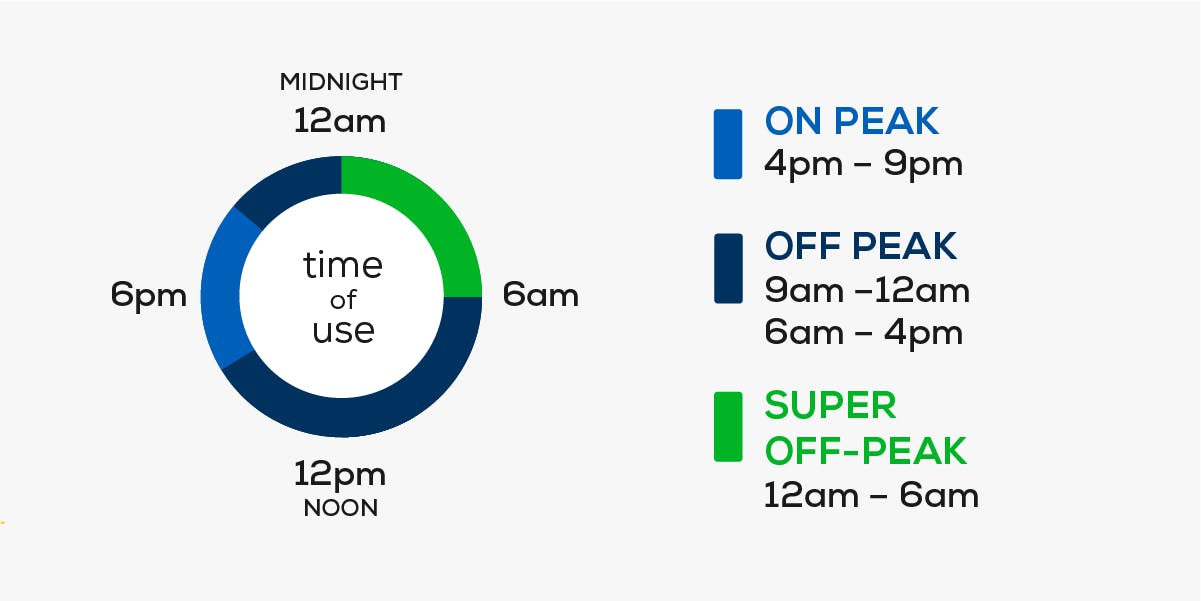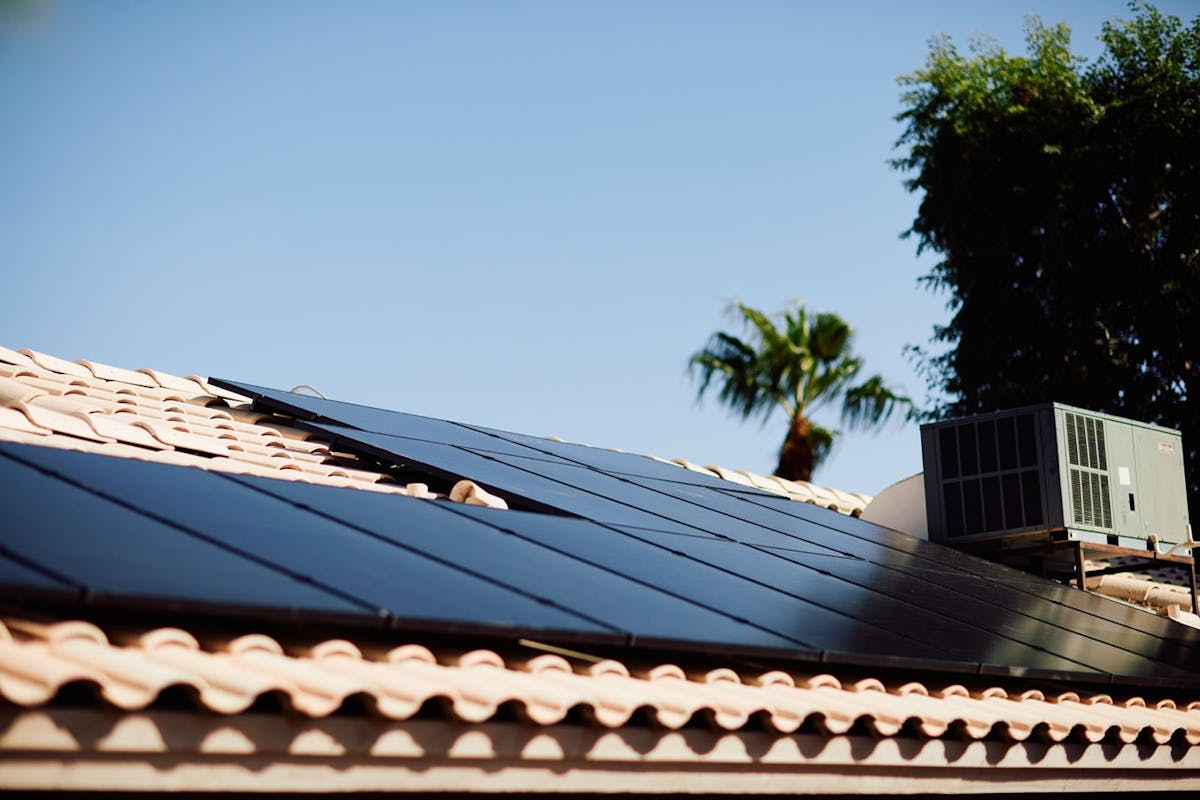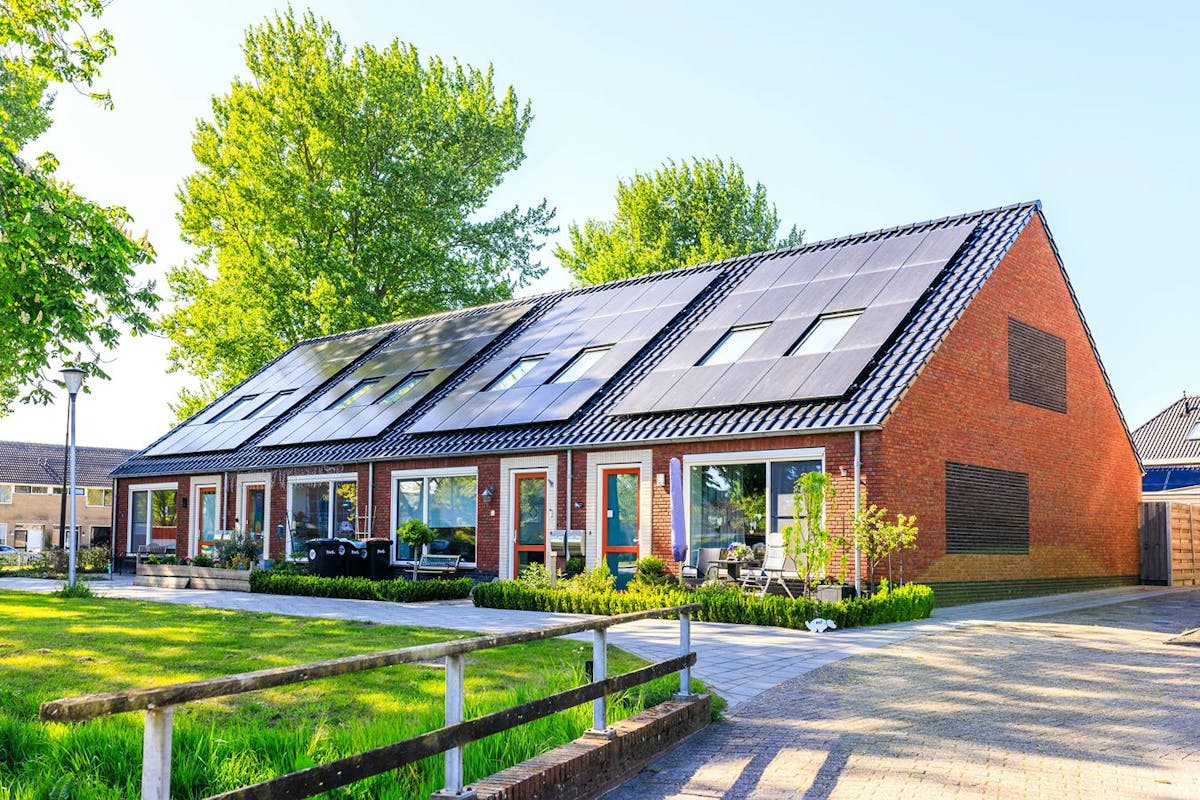Time-of-Use (TOU) Rates Guide: What They Are and How to Save
Last edited

Author
Andrew Giermak
Solar and Electrification Writer and Editor

Editor
Andrew Blok
Electrification and Solar Writer and Editor

When you hear about different rates, periods, and plans from your utility company, you probably don’t think of how you can use those numbers and figures to your advantage. But, you can use time-of-use rates to save money on your home’s electricity.
This guide will explain TOU plans, peak and off-peak periods, and how you can use solar power, battery storage, smart devices, and more to save energy and save money.
See how much you can save by going solar with Palmetto
What Are Time-of-Use (TOU) Rates?
Time-of-use rates are rates based on the time of day you consume electricity. When demand for power is higher, electricity is more expensive to encourage people to cut back.. When demand is lower, electricity is cheaper.

TOU plans and “peak” and “off-peak” hours vary by utility and region, but often follow a general pattern. For example, peak hours are often summer weekday afternoons, while the off-peak period includes all other times, especially overnight hours.
Peak hours vs. off-peak hours
Peak rates are generally when demand for power is high. Off-peak rates are during lower demand. There can be differences depending on location and season.
For example, summer peak hours are often in the late afternoon and early evening when people use air conditioners most, but solar panels have started to ramp down for the evening. In the winter, they may be in the morning and afternoon when people are leaving for and returning home from work.
Off-peak hours are often overnight and when people are at work and home energy demand is generally lower.
What time is the cheapest electricity rate?
During off-peak hours, the demand for energy is lower because fewer people are using electricity, so utilities can sell it for less.
If you can charge an electric vehicle, run your washer and dryer, or run the dishwasher at night or in the morning, when rates are low, you could save money.
Why Do Utility Companies Offer Time-of-Use Rates?
Before TOU rates, the price of electricity remained constant no matter the demand on the grid. Usage is usually higher during summer (due to air conditioning) while decreasing in winter.
Peak periods are primarily from 4-9 p.m. Why? It’s when the most people are home and using power.
It can be costly and time intensive to bring generation online to meet the increased demand. Some plants can rev up to full capacity in under an hour. Others can take up to half a day.
To utility companies, it's cheaper to encourage consumers to manage their individual electricity usage.
Are Time-of-Use Rates Mandatory?
Most TOU plans are optional. For some customers, especially those with home solar panels, the TOU plans may be mandatory.
Solar panels generate electricity most efficiently during the mid-day and afternoon. Later, when demand is higher, solar homeowners typically need grid electricity. Utilities use TOU plans to charge solar users more during those times. It can encourage the adoption of home batteries, which allow solar panel owners to avoid more expensive peak periods with stored solar energy.
How Can I Tell if I'm on a TOU Rate?
If you aren’t sure about your plan or would like to learn about your options, review your utility bill.
Your bill should indicate your electric rate schedule or class. Some companies include an insert with more information on the electric rate class. They should actively inform you about the different rates for your usage depending on time of day.
See how much you can save by going solar with Palmetto
Understanding a Utility Bill With Time-of-Use Rates
With a regular electricity rate, calculating your monthly bill is easy. Multiply your usage in kilowatt-hours (kWh) by the rate in cents per kWh.
But if you’re on a TOU plan, each time period will have a different rate. You have to look at electricity used during each time period. You multiply each usage figure with the corresponding rate to determine the cost for a given time period. Then, add each time period’s amount to get the full bill.
How to Save Money With TOU Rates
Whether you choose a TOU plan or your utility company puts you on one, there are ways you can save money. The obvious way is to cut down consumption during the peak periods and use energy during off-peak hours.
Switch to solar
Going solar is a way to maximize savings over the long run. Solar systems give maximum power during the afternoons and mid-days. Since TOU rates are higher in the evenings, you can store solar electricity and use it later if you have battery storage or net metering.
Use batteries
Fill up your batteries with solar power or grid power during off-peak hours. Then use the stored energy during peak or super-peak rates.
Use smart appliances
Appliances you can schedule or delay start can help you shift their use to off-peak hours. Some appliances can track electricity consumption in your area and automatically switch on when rates are low.
Use a smart thermostat
Air conditioning can quickly increase your bill during the summer. Cold winters also mean high energy consumption for heating. Install a smart thermostat and set it up to run less during expensive hours.
Use net metering
Check to see if net metering is available in your area. You send excess solar power to the grid and earn bill credits.
Electric Vehicles and Time-of-Use Rates
Charging an EV battery to total capacity can require a lot of energy.
The good news is EVs usually come with programmable charging settings. You can set them to charge during off-peak periods and save.
You can save more and use cleaner, renewable energy using solar power, likely stored in a battery, then discharged into the EV overnight.
Time-of-Use Rates and Solar Panels
If your TOU plan has a peak period later in the afternoon, panels facing west could boost energy generation during that time and help you get more solar energy when electricity demand is high.
However, it’s a more likely recommendation to design the system to maximize production and generate excess power, then use net metering to offset the grid power you use. A professional can help design the best system for your home and utility rate structure.
Solar battery storage allows you to avoid the expensive electricity from the grid. You can fill your battery when solar production is at its highest, or with grid power at inexpensive off-peak times. Then, you use battery power instead of peak-period utility grid power.
Find ways to save money and energy by using the Palmetto app, earning Palmetto Points, and saving on a home backup battery and other products in the app’s shop.
If you’re interested in seeing an estimate of your savings with solar panels, use our solar savings calculator today.
See what solar can do for you:
Frequently Asked Questions
What does TOU mean in electricity?
Time-of-use rates are rates set by utility companies which, in general, make electricity more expensive during high-demand periods and less expensive in low-demand periods.
Can you save money with time-of-use rates?
You can save money using time-of-use rates to your advantage. It’s possible to use solar power, net metering, and battery storage (from solar or grid power), along with ideas to save energy or use energy at off-peak or lower rate periods, to save.
What is the cheapest time of day to use electricity?
Generally, the lowest-demand times of day, overnight and early in the morning, are the cheapest times to use electricity from the utility company.


